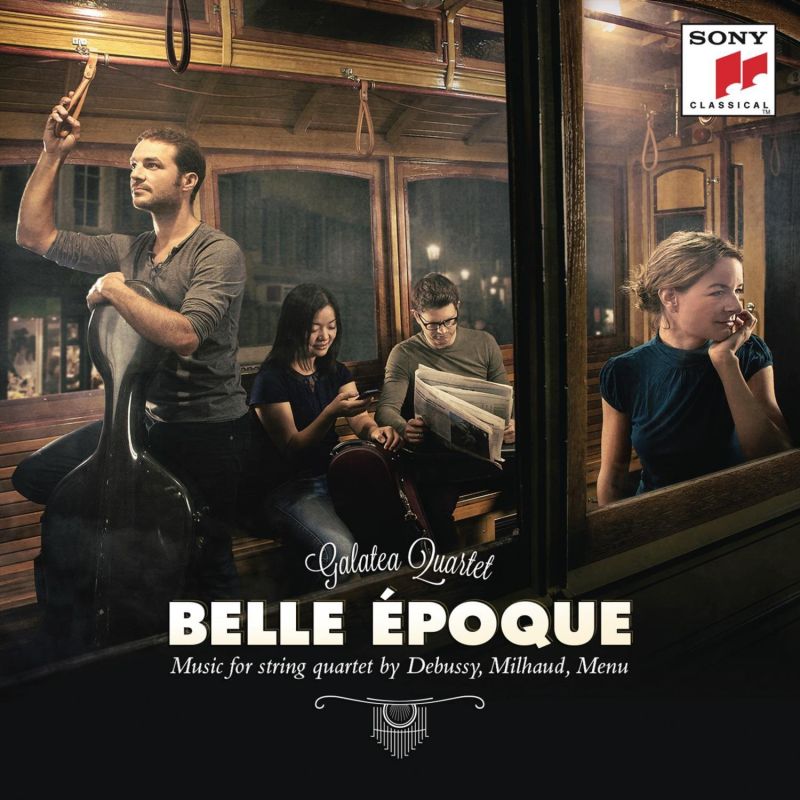Belle époque
View record and artist detailsRecord and Artist Details
Composer or Director: Claude Debussy, Pierre Menu, Darius Milhaud
Genre:
Chamber
Label: Sony Classical
Magazine Review Date: 08/2014
Media Format: CD or Download
Media Runtime: 58
Mastering:
DDD
Catalogue Number: 88883 78821-2

Tracks:
| Composition | Artist Credit |
|---|---|
| String Quartet |
Claude Debussy, Composer
Claude Debussy, Composer Galatea Quartet |
| Sonatine |
Pierre Menu, Composer
Galatea Quartet Pierre Menu, Composer |
| String Quartet No. 1 |
Darius Milhaud, Composer
Darius Milhaud, Composer Galatea Quartet |
Author: David Patrick Stearns
All of them followed the 1893 Debussy quartet and clearly play off of it, showing just how many different elements one could draw from, whether thematically or harmonically. But it’s Debussy’s way of writing four hugely different movements that feel like they belong together (and have certain thematic links) that Milhaud seized upon in the first of his 18 quartets, written in 1912, that intriguingly seems to begin in mid-sentence and goes on to be an extremely attractive, thoughtfully argued work. Besides that, the third and best of Milhaud’s movements is influenced by the dark but quiet realms of Debussy’s Pelléas et Mélisande: it can seem thematically weak on first hearing but turns out to be subtle and deeply insinuating upon return visits.
The Sonatine by Pierre Menu requires explanation. This student of Roger-Ducassse died in 1919 at the age of 23, a victim of the First World War, and is discussed (when at all) as a great French might-have-been along with Lili Boulanger. Though slight, the Sonatine is quite worthwhile, though the inevitable descriptions of it – a promising composer whose work sounds like Debussy’s outtakes – shouldn’t be mistaken for faint praise. If ever a piece leaves you wanting more, it’s the Debussy Quartet. And here we have it.
The Galatea Quartet’s command of their instruments gives the performances extra distinction: though not a group to indulge in a lot of colour, they give Debussy just enough intellectual rigour, the third movement marked by air-tight chord tunings with minimum vibrato that few quartets can deliver at most any register and volume, and do so in ways that reveal even greater depths in the music. The Milhaud performance has a sense of continuity that eludes the more prosaic Quatuor Parisii while also entering the music’s nature imagery in ways that make the piece a forest of sound. As for the Menu, one has little comparison. This Sonatine performance appears to be the only work of his currently available on disc.
Discover the world's largest classical music catalogue with Presto Music.

Gramophone Digital Club
- Digital Edition
- Digital Archive
- Reviews Database
- Full website access
From £8.75 / month
Subscribe
Gramophone Full Club
- Print Edition
- Digital Edition
- Digital Archive
- Reviews Database
- Full website access
From £11.00 / month
Subscribe
If you are a library, university or other organisation that would be interested in an institutional subscription to Gramophone please click here for further information.




